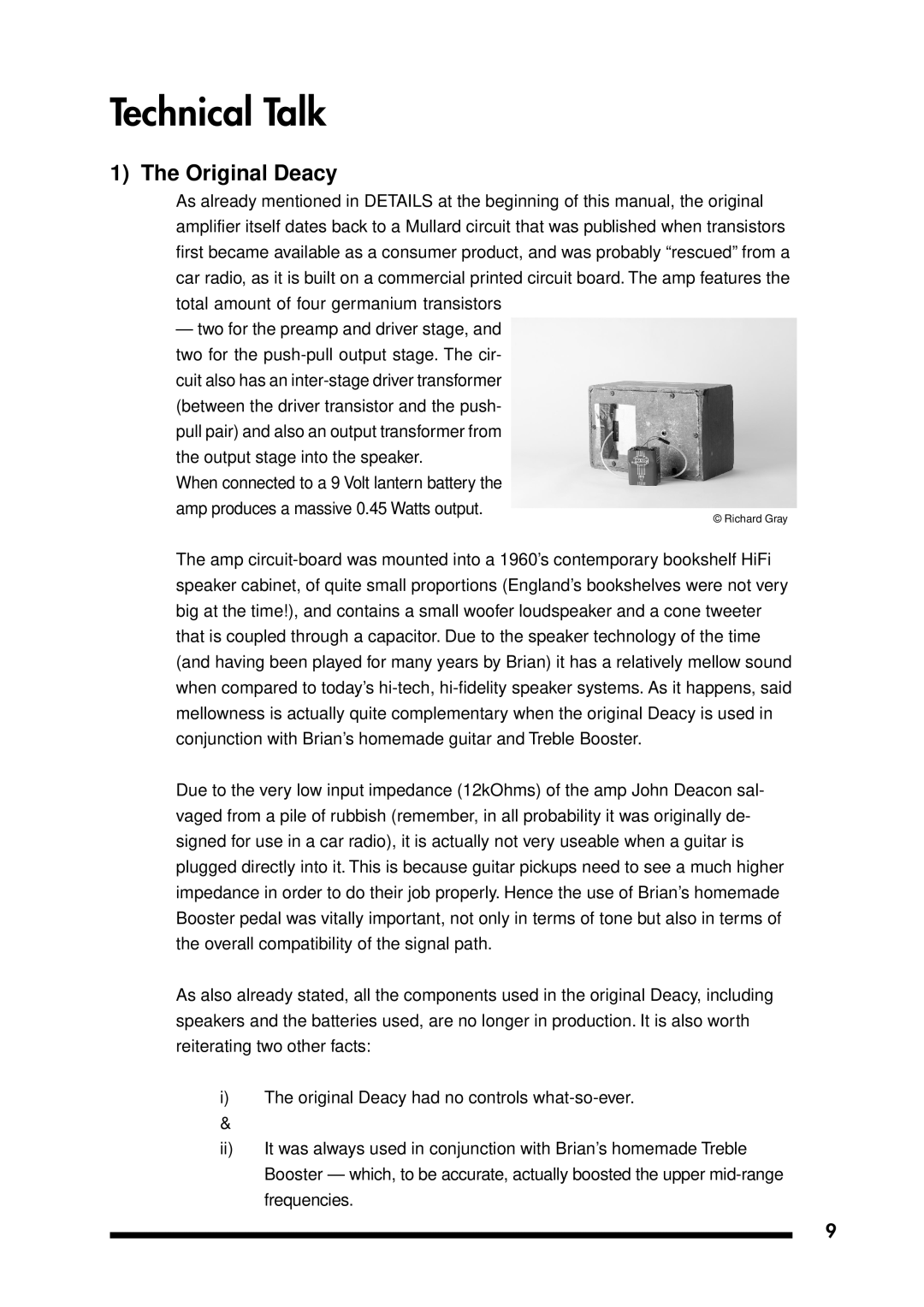
Technical Talk
1) The Original Deacy
As already mentioned in DETAILS at the beginning of this manual, the original amplifier itself dates back to a Mullard circuit that was published when transistors first became available as a consumer product, and was probably “rescued” from a car radio, as it is built on a commercial printed circuit board. The amp features the total amount of four germanium transistors
—two for the preamp and driver stage, and two for the
When connected to a 9 Volt lantern battery the amp produces a massive 0.45 Watts output.
© Richard Gray
The amp
Due to the very low input impedance (12kOhms) of the amp John Deacon sal- vaged from a pile of rubbish (remember, in all probability it was originally de- signed for use in a car radio), it is actually not very useable when a guitar is plugged directly into it. This is because guitar pickups need to see a much higher impedance in order to do their job properly. Hence the use of Brian’s homemade Booster pedal was vitally important, not only in terms of tone but also in terms of the overall compatibility of the signal path.
As also already stated, all the components used in the original Deacy, including speakers and the batteries used, are no longer in production. It is also worth reiterating two other facts:
i)The original Deacy had no controls
&
ii)It was always used in conjunction with Brian’s homemade Treble Booster — w hich, to be accurate, actually boosted the upper
9
